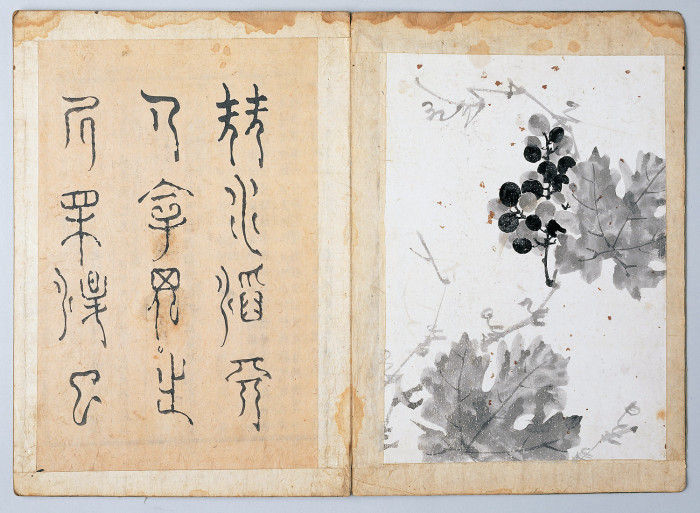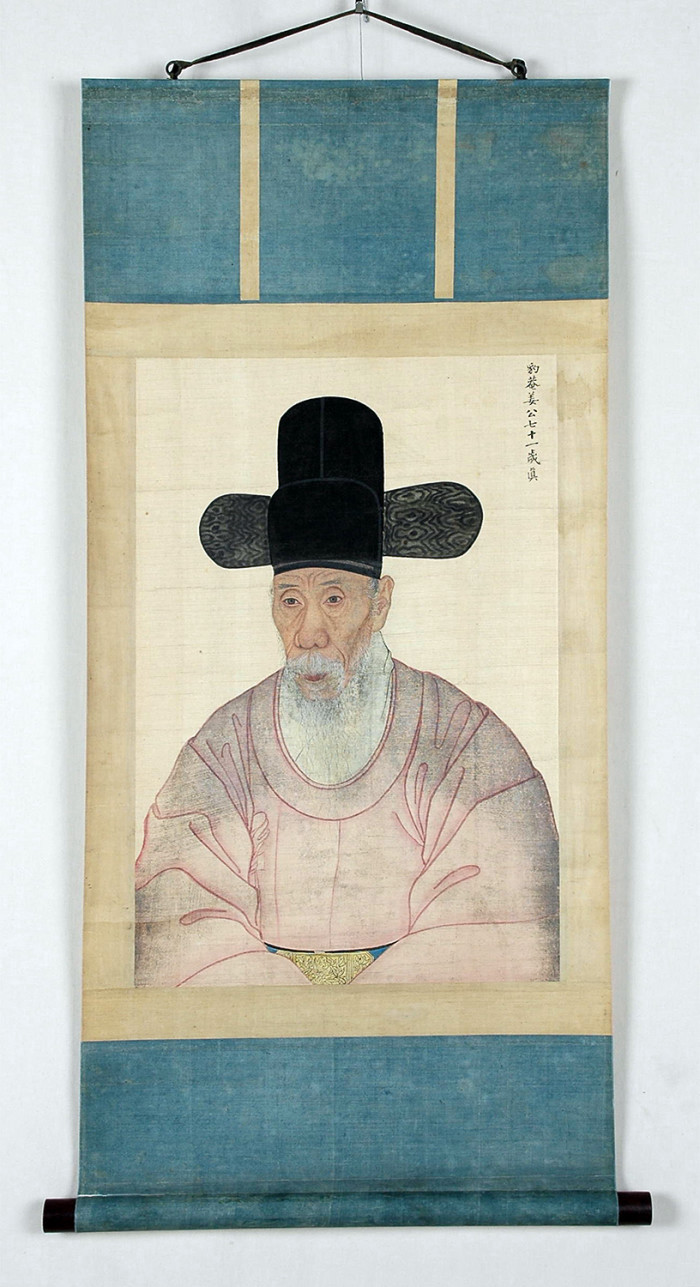경기문화재단
Literary Painting and Royal White Porcelain
The 2020 Joongbu Ilbo series 〈Gyeonggi-do Museum〉 is a content produced in a total of 10 series by the GyeongGi Provincial Museum, which has undergone a complete reorganization of the exhibition hall in celebration of the 25th anniversary of its opening. If you would like to see more detailed 〈Gyeonggi Province Museum〉, you can enjoy it in the original text on the Jungbu Ilbo website. |
Lead the culture of Joseon
Gyeonggi, which was the cultural center of the Joseon Dynasty, was at its center. The four-grandfather culture honed literature and art. Calligraphy and painting, centered on literary people, developed to a high level, and it has established itself as the hometown of royal white porcelain and the best ceramic production area in Joseon. There was also a GyeongGi at the center of science and thought. In the 16th century, leading the Hwadam School and Yulgok School, progressive studies such as Silhak and Seohak in the 18th century grew around Gyeonggi. Gyeonggi-do people with academic openness and flexibility were pioneers in preparing for the future by changing their lives.

[Photo] Misu Heo Mok's Letters and Pictures (眉叟筆帖)
This is the writing album of Heo Mok (1595-1682), a young man from Yeoncheon. Although he is a tattoo and a Confucian scholar, he has excellent skills in drawing and writing. Particularly, he has mastered the entire book called Misuche (眉叟体) and received reviews as the first man in the East.
Center of science and thought
Gyeonggi-do played a role as a center of study in the late Joseon Dynasty, as it received the intellectual nutrients of Hanyang and was equipped with openness, a characteristic of the region. In the 16th century, the world of thought was led by the Hwadam School of Seo Gyeong-deok (1489-1546), whose base was Kaesong, and the Yulgok School of Lee (1536-1584), whose base was Paju. In the 17th century, a new perspective began to be presented to the study of Sung Confucianism, centering on the Gyeonggi area. Park Se-dang (1629-1703) attempted to establish Yangming Studies from the perspective of Juja Studies, and Jeong Jeong Doo (1649-1736) led the Ganghwa School by studying Yangming Studies in Ganghwa Island.
In the 18th century, Gyeonggi Province emerged as a center of reform and progressive academics such as Silhak and Seohak. The intellectuals of Gyeonggi with academic flexibility such as Huh Mok, Yi, Yi, Kang Se-hwang, Chae Won, Jeong Yak-yong, and Lee Seung-hoon actively responded to social changes in the late Joseon Dynasty and paid attention to national reform for the people. In particular, it sought to improve the lives of suffering people by reforming the unequal land system and tax system.

[Photo] Kang Se-hwang's portrait
This is a portrait of Kang Se-hwang (1713-1791), a representative literary painter during the British and King Jeongjo periods. He lived in Ansan, interacted with painters such as Kim Hong-do, Sim Sa-jeong, and Choi Buk, and literary men called Ansan 15 Haksa, and was called the head of the Yewon in the late Joseon Dynasty. This portrait was seen when he was 71 years old. Although the artist is unknown, it is a half-figured figure of skill like a portrait drawn by Lee Myung-ki.
Worksheets of the grandfather and flower gardeners renowned for their paintings and writing
The tradition of art developed in the Gyeonggi region including Gaeseong during the Goryeo Dynasty was passed down to the Joseon Dynasty. In the early Joseon Dynasty, a new style of style was formed based on the tradition of Goryeo and the method of speaking in China. In the Gyeonggi area, a suburb of Hanyang, the literary warriors' calligraphy and painting activities and the painters, professional painters from Gyeonggi Province, stand out.
The brothers Kang Hee-an (1418-1464) and Kang Hee-Meng (1424-1483), who were active in Siheung, were literary painters in the early Joseon period who were born in the prestigious family of Kang Jinju. Pocheon's Yangsaeon (1517-1584) was good at Haehae and Chaoseo, and Seokbong Hanho (1543-1605) was active in Kaesong and created the 'Seokbongche', a typeface unique to Joseon. In the middle of the Joseon Dynasty, Josok (1595-1668) spent ten thousand years in Anyang, Heo Mok from Yeoncheon (1595-1682), Odalje (1609-1673) and Nam Guman (1629-1711), who were related to Yongin, and floods from Seonbu-dong, Ansan. Ju (1642-1704) and others worked as literary artists.
In the latter half of the Joseon Dynasty, Kang Se-hwang (1713-1791), in particular, lived in Ansan, developing the theory of painting creation through exchanges with literary men there and contributing to the expansion and deepening of Namjongmunhwa. With regard to the rise of painting during this period, Ansan area was the second most important area after Hanyang. These include Kang Se-hwang, who led the three verses of Siseo-hwa, his student Kim Hong-do (1745-1806), and Nam Jong-hwa's master Ju Ji Jeong (1707-1769).
In the late Joseon Dynasty, Shinwi (1769-1845) and Kim Jeong-hee (1786-1856) performed literary activities in Siheung and Gwacheon at the foot of Mt. Gwanak. Shin-wi, along with Lee Jeong and Yu Deok-jang, left a reputation as one of the three major mukjuk painters in the Joseon Dynasty. ), and reached the peak of the calligraphy and painting era.

[Photo] White porcelain jar (白磁壺)
Like a moon jar, the angled snout and the line flowing down from the round shoulder are beautiful. It is a representative work of a white porcelain jar with its voluptuous shape and soft color. The traces of the upper and lower parts made separately and joined remain on the inner surface, and the floor has traces of burning with sand. It is believed to have been made in a Geumsa-ri kiln in Gwangju in the first half of the 18th century.
The birthplace of Goryeo celadon and Joseon white porcelain
Among the traditional cultures of Gyeonggi-do, ceramics from the Goryeo and Joseon periods are the most representative. Goryeo celadon generators can be seen in kiln products in Seori, Yongin and Bangsan-dong, Siheung during the Goryeo Dynasty. Goryeo white porcelain made in Seori and celadon made in Bangsan-dong are believed to be the earliest products of Goryeo ware. Even when celadon was made in Gangjin and Buan in the heyday after the 11th century, porcelain was produced in local kilns such as Bojeong-ri, Yongin.
During the Joseon Dynasty, the finest white porcelain was produced and supplied to the royal family in the Gwanyo of the Saongwon branch in Gwangju (廣州). It can be seen that the production of Joseon white porcelain was carried out by moving and changing according to the time through the index survey of the Gwanyo kiln site in Gwangju and the excavation of Domari, Usan-ri, Songjeong-ri, and Bunwon-ri.
Chosun society, which was aimed at the ideal society of Confucianism, emphasized frugality and practicality in ceramic culture. Sejong allowed only white porcelain to be used as royal vessels, so the technique of making white porcelain was able to develop rapidly under the interest of the royal family. Gwanyo was operated from the late 15th century until 1884 when it was privatized and played a pivotal role in producing royal white porcelain throughout the Joseon Dynasty. In particular, Bunwon white porcelain has a unique aesthetic that emphasizes the overall tone, although the model, pattern, and decoration are not simple and colorful with the intention of the royal family to embody Confucian virtues.
-Bonsoo Park (Director of Curator, GyeongGi Provincial Museum)-
<ggc의 모든 콘텐츠는 저작권법의 보호를 받습니다.>